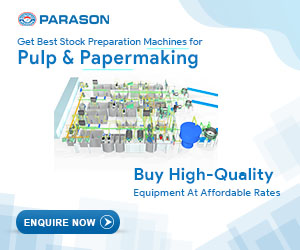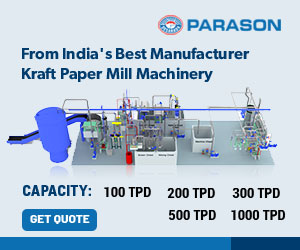KPI i.e. Key Performance Indicators comes into play when you have to expand your paper manufacturing business. This improvement is done by considering all the possible expansion risks to increase the profits.
What is a KPI?
KPI or Key Performance Indicator is a well-defined metric to measure the performance of your paper mill. This performance measurement is done over time to monitor, analyze, compare, and optimize the working process of your paper production.
Check these top 10 most important KPIs for paper mills
We have collected a list of the top 10 most important KPIs for paper mills that will help you to scale and improve your mill’s manufacturing process. With these KPIs, you can streamline and enhance the paper manufacturing process in your mill.
Before going ahead, let us tell you the benefits of KPIs –
- Improve the accountability of your paper manufacturing
- Increase the visibility of your products
- Make better business related decisions
- Improve the manufacturing performance
- Increase the profit of your paper mill
- Optimize resource utilization
10 Best KPI for Paper Mills
- Cycle Time – The cycle time is the average time taken to produce one roll/sheet of paper. This sounds very simple, however, it is one of the most powerful KPIs for your mill. The cycle time metric can also sometimes be measured concerning the time that actually takes for the product to reach the customer. Papermill cycle time can be calculated as the time since the order has received till the time the order has been completed.
- Inventory Turns – This factor helps to analyze that how many times an inventory has been sold in certain duration to calculate the resource effectiveness. Inventory turns can be calculated as the cost of sales per average inventory. Lower results indicate that you have poor sales but fine inventory, whereas higher results indicate that you have good sales but poor inventory.
- Throughput – Throughput is an important KPI for a paper mill. It is useful to analyze the progress and growth statistics of the mill. Throughput of a paper mill is the capacity of paper production of that mill. It is the production capability of a machine, line, or the entire plant. Throughput is measured concerning a specific time. For example: Number of sheets produced per day.
- Cash-to-Cash Cycle Time – A time and cash-based KPI is important to analyze the profits of the mill. This KPI measures the time taken from the first cash drawn out from the company for buying raw material to the time at which the customer pays for the products. There, the cash-to-cash cycle time is the time from investment to returns.
- Demand Forecasting – The KPI of demand forecasting is taken into consideration in paper mills to evaluate the amounts of raw materials required for paper production. This forecasting can vary from time to time and is based on frequent uncontrollable factors. The demand can be calculated as raw materials * production rate.
- Return on Assets (ROA) – Financial metrics are very important in terms of manufacturing and profits. Every paper mill’s ultimate aim is to make profits. The return on assets KPI helps you to evaluate how well is your paper mill performing in terms of money. It can be calculated as net income divided by average total assets.
- On-Time Delivery – A good customer base is built with good service and good products. Providing punctual service to your customers is essential for any business to run. This KPI figures out how many orders are delivered on time and how many were delayed. This helps to plan and prepare a schedule for delivering on time in the future.
- Training Hours – Do you train your employees on essential tasks? It may seem that training is not the solution for efficient working, however, it is an important factor for improving performance and productivity. The ‘sink or swim’ methodology is no longer a classy way to advance your business. It creates a lot of problems. Allocate a certain number of training hours and see the improvement in yourself.
- Defective products – Examine the number of defective products per lot with respect to the perfect products. To obtain results, divide the defective number of products by the total number of products. The lesser the answer, the better. You can track that if the number is consistently higher, you need to decrease the defectiveness by making changes in the manufacturing process accordingly.
- Customer Returns – The final KPI that we want you to seriously focus on is customer returns. You must keep track of return orders as its imperative. This metric is used to observe how many orders get returned and what are the reasons behind that. You should aim for the lowest return orders. The KPI for this metric is calculated in terms of percentage as –
Number of returns divided by total orders shipped * 100.
Join World Paper Mill Facebook Group to interact with 13,000+ paper mill product buyers and suppliers.




